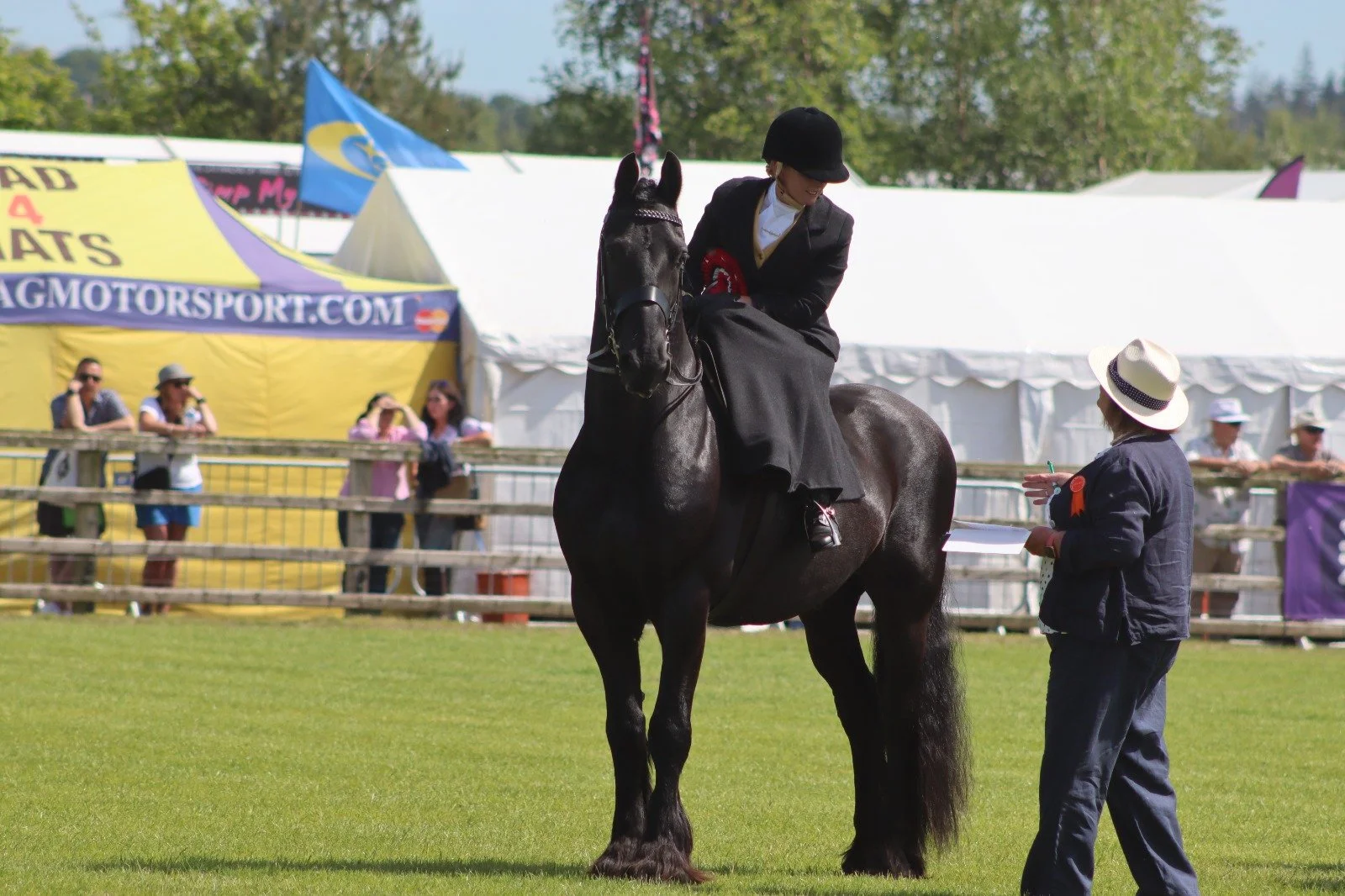
Why Winter Riding Matters: Protecting Winter Grazing & Keeping Horses Healthy
Learn why winter arena riding protects horse health and flood-damaged grazing. Discover how to manage fields, prevent injuries, and keep horses fit in winter

How to Look After Horses During Severe Weather Storms (with Local Co. Down Impact)
Learn how to protect and care for your horses during severe weather storms — from stable safety to flooded fields — with practical advice based on this week’s Co Down floods and high winds.

Stabling Horses Over Winter: Comfort, Health, and Safety First
Learn how to keep your horse safe, warm, and healthy when stabled over winter. Expert tips on bedding, feeding, ventilation, and safety equipment like the ESR Bar.

Riding into the Spotlight: BHS and Their Role at the Shows
As well as following along with Balmoral, we were delighted to attend the BHS shows in September. It was a fantastic opportunity to meet so many of you in person, to hear your experiences first-hand, and to share in the enthusiasm that surrounds these events.

Caring for Your Horse Trailer Safety Equipment After Show Season

What to Do if a Horse Rears in a Trailer – And How to Stay Safe
Transporting horses can sometimes involve highly stressful situations—one of the most dangerous is if a horse rears in a trailer. This behavior poses serious risks to everyone involved. However, with the right knowledge, calm approach, and safety-minded equipment like the ESR Bar, you can minimize harm and protect both horse and handler.

What to Pack in Your Horse Trailer Emergency Kit
Every horse owner dreads the thought of something going wrong while hauling. Whether it’s a flat tyre, a horse panic, or a breakdown miles from help, having the right tools on hand can mean the difference between a minor inconvenience and a full-blown emergency.
A well-stocked horse trailer emergency kit isn’t just about peace of mind—it’s a critical part of safe, responsible transport. In this guide, we’ll walk through exactly what you should have on board, with input from transport safety experts and UK animal welfare guidelines.

The Evolution of Horse Trailer Safety: From Wooden Ramps to Smart Bars
Transporting horses is no small task. These powerful, sensitive animals require careful handling, calm environments, and above all—safety. Over the past century, the design and safety features of horse trailers have evolved drastically. From makeshift wooden wagons to engineered safety systems, the journey reflects how seriously we now take equine welfare in transit.
Let’s explore how horse trailers have changed through the decades—and why simple innovations like the ESR Bar are essential for safer, smarter transport today.

Transporting Livestock in Hot Weather: A Focus on Equine Welfare
As the UK experiences increasingly warmer summers, transporting livestock—especially horses—requires careful consideration and preparation. Heat stress is a major welfare concern during travel, particularly for animals such as horses that are often moved for competition, leisure, or veterinary care. This blog post explores the risks of transporting horses and other livestock in hot weather, offers practical tips to reduce heat stress, and outlines UK-specific welfare regulations that must be adhered to for legal and ethical compliance.

The Weighty Issue: Understanding Large Animal Weight Distribution When Suspended Over Safety Bars
Transporting and handling large animals such as horses and cattle requires an in-depth understanding of both animal behaviour and physical mechanics. One of the more dangerous and distressing scenarios that can occur during travel or stabling is an animal becoming stuck or suspended over a barrier—typically a breast bar in a trailer or a fence in a stable or field. While rare, these incidents can be life-threatening for the animal and dangerous for any person attempting to intervene.
In this blog post, we’ll explore what actually happens biomechanically when a large animal ends up over a bar or rail, with a particular focus on weight distribution, structural strain, and risk to both animal and handler—and how solutions like the ESR Bar can make a critical difference.

A Day Out at the Balmoral Show
Each May, the Balmoral Show draws thousands of visitors to Balmoral Park, Lisburn, just outside Belfast. Hosted by the Royal Ulster Agricultural Society (RUAS), it’s Northern Ireland’s largest agricultural event, bringing together a vibrant mix of farming traditions, family fun, food, and top-tier animal displays. Whether you’re attending for business, sport, or leisure, Balmoral never disappoints.
The Evolution of Safety Features in Horse Trailers: Old vs. New

Trailer Safety: How to Safely Release a Stuck Horse Without Risk
When Panic Strikes: The Importance of Safety When Releasing a Stuck Horse in a Trailer
Horse trailers are essential tools for equestrians, but they can quickly become hazardous in moments of stress. One of the most alarming situations is when a horse becomes trapped over or under a breast bar. This isn’t just a risk to the horse’s safety — it also places handlers in a dangerous position if they attempt a rescue without the proper systems in place.

The Importance of Horse and Rider Safety in Good Weather
As the sun returns and the days grow longer, horse riders across the country head out to enjoy the fresh air and countryside. While fair weather may feel safer and more inviting, it also increases the risks for horses and their riders. With more vehicles on the road, more walkers and cyclists on shared paths, and more unpredictable situations arising, it's essential to stay alert and prepared.

